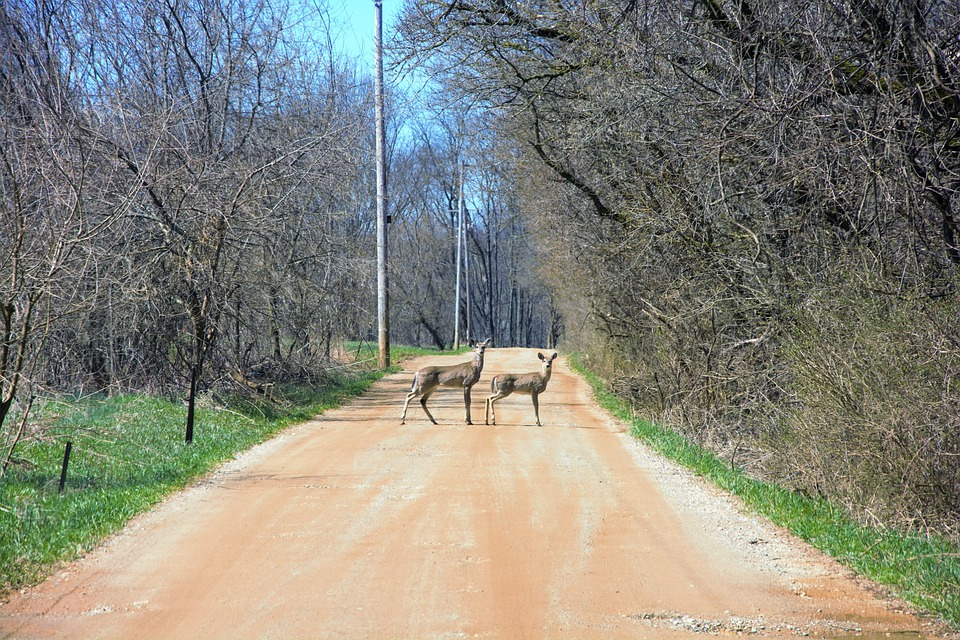As Poslovni Dnevnik/Lucija Spiljak writes, vehicle collisions with game and other wild animals are among the burning problems for all roads around the world, including right here in Croatia. On the roads, along with small animals, larger animals, such as roe deer, wild boar, foxes, and in rare cases even wolves and bears suffer on the roads. The victims are not only animals, but also drivers and other road users.
Various solutions have been being worked on across the world for years to stop or at least reduce such awful situations, and Croatia has thought up its own solution, unique in the world, which has already been approved by hunters – Waldpass, the first device to deter wild animals from the roads using an infrared spectrum.
“We want to make the population aware of this problem, to bring the Waldpass community together and promote the protection of animals and human lives on the roads. The cumulative effect is important, we want to encourage change. The larger the community we create, the safer the roads will be and the animals will stay where they should be, in the forest. We first developed and tested the product, and then founded the company,” explained Ana Trepsic, the business manager of Zagreb’s Waldpass.
A Croatian solution to a global problem
The number of people injured or even killed in these accidents is alarming. At the same time, damage to vehicles reaches tens of thousands of kuna. According to statistics, 30,000 people have been injured in the last 15 years and 300 deaths are caused each year across Europe when vehicles collide with animals on the road. Last year, 684 traffic accidents were officially recorded in Croatia due to vehicle collisions with animals. In these accidents, 39 people were injured, 10 of them seriously. In previous years, there were even more vehicle accidents caused by wildlife, and people were killed in some of them.
As Trepsic and Marko Borosak, the director of Waldpass, explained, this device is placed on the vehicle’s registration plate, and the infrared light on it drives animals away from the oncoming car, which prevents the vehicle from crashing into the animal. Infrared light has a wavelength outside the human visible spectrum so it cannot be observed and as such is not dangerous to other people on the road. As the visible spectrum of deer is very different, these animals perceive infrared light as a threat and associate the light with a real danger in the movement of the vehicle, and therefore avoid it at all costs.
The transmitter of the Waldpass device is mounted on the license plate holder, and then fixed in a suitable place on the front or rear of the vehicle. There is also a double installation for better performance on both license plates. The integrated GPS speedometer ensures for the optimal switching on and operation of the device, and the waterproof and robust design can withstand all weather and road conditions.
They’re presenting their device to the public for the first time today, on October the 4th, when the International Day for the Protection of Animals is also being celebrated. In addition, autumn is the optimal period for the installation of Waldpass’ creation because animals such as deer are the most active due to the mating season, most often at dawn and dusk when their behaviour, especially that of stags and bucks, can be truly unpredictable.
Waldpass has, so to speak, arrived at the right time when there is more and more talk about the problem of wildlife on the roads, especially wild boar, animals which people are increasingly seeing in the lower mountains and even in their own backyards where they can become aggressive and dangerous to domestic animals and pets. During the coronavirus pandemic, their numbers increased even more.
Borosak explained that the story with Waldpass started by accident, during the research of the influence of air and lasers on the behaviour of animals.
“We studied the work of foreign experts, and we based our device more on visual detection, examining the frequencies and the exact effect of our technology on wildlife. Our device throws light left and right, and the designed angle is 30 degrees – as the vehicle moves, it emits light on both sides of the section. This protects the community.
When we saw significant results, we decided to move forward with it. More specifically, we’ve been engaged in this for the past 2.5 years, and we used the coronavirus pandemic to investigate and develop the entire project even more intensively, devising a proper strategy. This innovation has been submitted for patent protection, we’re waiting for an opinion and we’ll continue in the direction of adopting it as a patent. We’d be glad if this product had a global impact. We even have test devices ready. It will be necessary to monitor local game for a period of 3-6 months, set up some night cameras, cover the entire area, equip a fleet of vehicles, look at the seasonal impact… We’re intensively looking for where we can place these test devices. We hope to start cooperation with the Faculty of Agriculture, within which there is a department for hunting, and we also plan to turn to hunting societies, HGSS and similar organisations,” explained Waldpass’ Borosak.
Fifteen patents in fifteen years…
Waldpass is otherwise a company whose founder and director is Marko Borosak, who is also an innovator and the founder of A-Elektronik. Borosak has been dealing with automotive electronics for fifteen years, in which he has as many as fifteen patents in the field of laser and radar technology.
For more, make sure to check out Made in Croatia.








